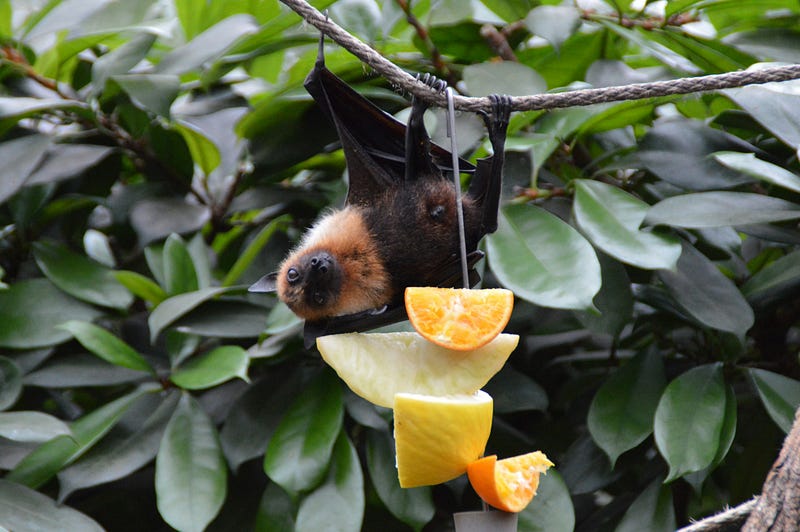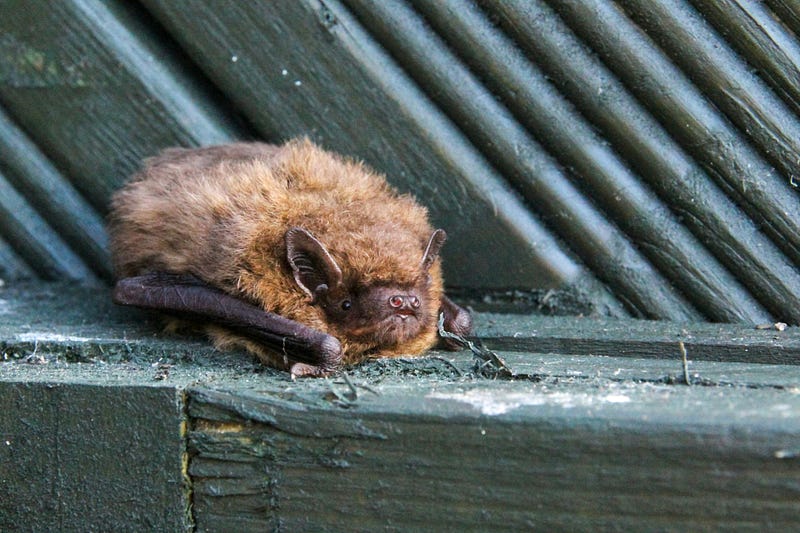The Essential Role of Bats and Climate Change Challenges
Written on
Chapter 1: The Importance of Bats in Our Ecosystem
Bats have long been subjects of intrigue and fear, often depicted in a shadowy light in popular culture. However, their real significance extends far beyond these portrayals. They serve as essential pest controllers and pollinators, contributing greatly to the health of our ecosystems. One of their most fascinating abilities is echolocation, which enables them to navigate in the dark with remarkable accuracy, hunting prey and avoiding obstacles effortlessly.

Nonetheless, these incredible creatures are now confronted with a significant challenge. Climate change is transforming their echolocation advantage into a disadvantage, posing serious risks to their survival. As environmental conditions shift, insect populations are disrupted, making it increasingly difficult for bats to adapt. This not only threatens their existence but also disrupts the delicate balance of our ecosystem.
In this article, we will examine the critical role bats play in the environment, delve into the details of their echolocation superpower, and highlight the impacts of climate change on these vital creatures. Understanding these environmental challenges can illuminate the broader implications of climate change for our natural world.
Chapter 2: The Fascinating Adaptations of Bats
Bats possess a variety of extraordinary adaptations that distinguish them from other mammals. Their remarkable echolocation capabilities, coupled with their roles as pest controllers and pollinators, make them indispensable to the maintenance of ecological balance.
Section 2.2: Bats as Natural Pest Controllers
Bats play a crucial role in managing insect populations, making them valuable allies in both agriculture and ecology. With diets predominantly composed of insects, bats consume vast amounts, helping to control pest populations that could otherwise devastate crops or spread diseases. Their appetite for mosquitoes and agricultural pests not only aids farmers but also maintains ecological harmony.
Section 2.3: Bats as Essential Pollinators
In addition to pest control, bats are vital pollinators, especially in tropical ecosystems. While feeding on nectar, they inadvertently transfer pollen from one flower to another, supporting the reproduction of various plant species. This essential role contributes to the rich biodiversity of flora and sustains the intricate web of life within bat-populated ecosystems.
Bats' unique abilities have granted them a significant role in sustaining ecological harmony and biodiversity. However, they now face new challenges due to climate change.
Chapter 3: Climate Change and Its Impact on Bats
Climate change poses severe threats to bat populations, affecting their habitats and unique abilities. As global temperatures rise and weather patterns become more erratic, the consequences for bat ecosystems are becoming increasingly clear.
Section 3.1: Habitat Loss - The Impact on Roosting and Foraging
The effects of climate change are leading to habitat destruction, significantly impacting the availability of suitable roosting and foraging locations for bats. Shifting temperatures and changing precipitation patterns compromise the natural habitats essential for bat survival, disrupting their roosting behaviors and reducing access to foraging grounds. This can lead to food shortages and decreased reproductive success.
Section 3.2: Disruption of Echolocation
Climate-related factors, including extreme weather events, can severely impact bats' echolocation capabilities. These creatures rely on echolocation for navigation, foraging, and communication. Environmental disturbances can hinder their ability to use this skill effectively, increasing the risk of disorientation and reducing their hunting success.
The first video titled "Why the Immune System Is a Bat's Secret Superpower" explores the remarkable adaptations of bats that contribute to their resilience, including their immune systems that help them thrive in various environments.
Section 3.3: Consequences for Pollination
Climate change's impact on bat-assisted pollination can have far-reaching effects on ecosystem stability. Bats are crucial for pollinating a variety of plants, and disruptions to weather patterns and flowering times threaten this balance. Altered pollination can lead to reduced plant diversity, lower crop yields, and diminished ecosystem resilience.
The intricate relationships affected by climate change highlight the urgent need for conservation efforts to protect bat populations and the ecosystems they support.
The second video, "Why bats are vital to the ecosystem," discusses the essential roles bats play in maintaining ecological balance and the consequences of their decline.
Chapter 4: The Importance of Conservation Efforts
The decline of bat populations poses significant implications for biodiversity and beyond. The cascading effects of this decline can disrupt ecosystems, impact human health, and present challenges for agriculture.
Section 4.1: Ecological Imbalance
Reduced bat populations can lead to ecological imbalances, as these natural insectivores play a critical role in controlling insect populations. With fewer bats, insect numbers may surge, prompting increased pesticide use to manage crop damage. This disruption can have far-reaching effects on plant life and other wildlife, undermining the delicate balance of ecosystems.
Section 4.2: Impact on Human Health and Agriculture
The decline of bats also poses risks to human health and agriculture. Fewer bats mean a higher likelihood of insect-borne diseases, such as West Nile virus and Zika virus. Additionally, reduced bat populations could lead to increased crop damage, resulting in economic losses for farmers and potential food shortages for communities. The effects of bat population decline underscore the interconnectedness of species within ecosystems and the vital role these nocturnal creatures play.
Section 4.3: Conservation Strategies and Mitigation
In response to the challenges posed by climate change, efforts are underway to protect bat populations and mitigate the impacts of environmental shifts. Preserving and restoring habitats, including caves and urban green spaces, is crucial for supporting bat survival.

Education and outreach initiatives are essential for changing public perceptions of bats, fostering understanding of their ecological significance, and encouraging support for conservation. Furthermore, implementing adaptive strategies to create climate-resilient habitats and monitoring population trends will be vital in ensuring bats thrive in a changing environment.
Conclusion: The Urgent Need for Action
In summary, the extraordinary abilities of bats, particularly their role in controlling insect populations, are under severe threat from climate change. This challenge not only jeopardizes bat survival but also the balance of ecosystems and agricultural systems worldwide. Recognizing the importance of conservation efforts to protect these remarkable creatures is crucial for maintaining ecological equilibrium. Proactive measures must be taken to mitigate climate change impacts on bat habitats, securing their invaluable contributions to our natural world.
